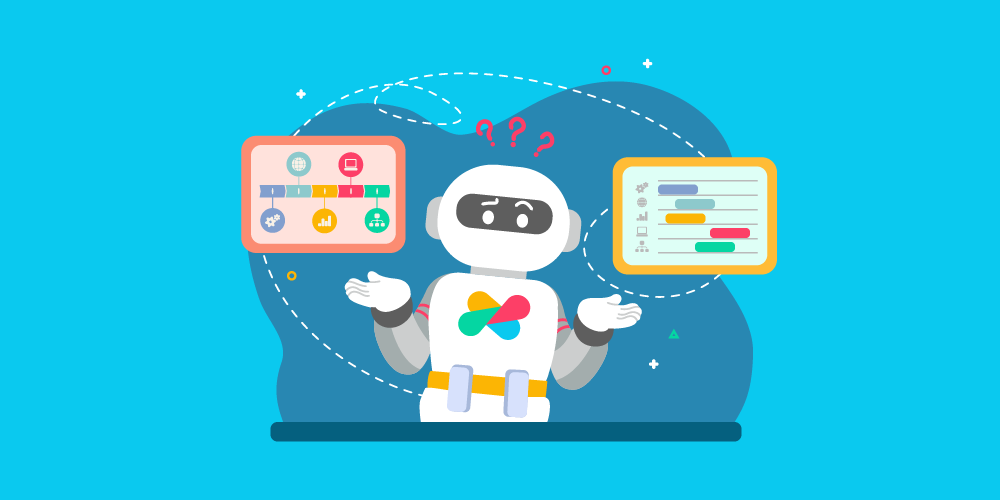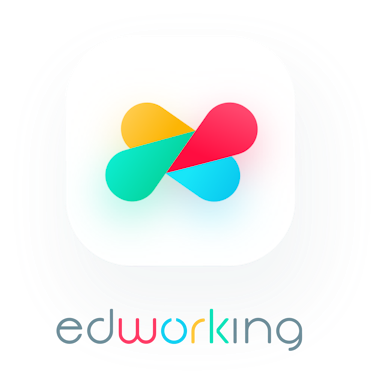Remote work isn’t just a trend anymore—it’s the norm. And in 2025, we're witnessing an evolution in how teams function across time zones, screens, and Slack messages. While remote tools have made it easier to connect globally, one thing still trips teams up: task delegation.
You’d think it’s as simple as handing off a to-do, right? Not quite. Effective task delegation requires much more than assigning a task and hoping for the best. In the remote world, it’s about clarity, accountability, trust, and the smart use of technology. The stakes are even higher when you’re managing people you rarely (or never) see in person.
So what’s changing this year? In 2025, we’re seeing smarter AI-driven tools, more autonomy in teams, and a growing preference for asynchronous workflows. These shifts are transforming the way tasks are assigned, tracked, and completed.

If you’ve ever felt like you’re constantly chasing deadlines or repeating yourself across multiple platforms, this guide is for you. Let’s explore how to improve task delegation for your remote team and build a more productive, collaborative, and stress-free work environment.
 The Evolution of Task Delegation in Remote Work
The Evolution of Task Delegation in Remote Work
From micromanagement to asynchronous leadership
Remember when managers would hover over your desk, asking for status updates? That’s not just impossible in remote work—it’s also outdated. In 2025, we’ve moved far away from micromanagement and toward trust-based leadership. Remote teams now thrive on autonomy, but that autonomy only works when task delegation is handled properly.
Leaders today aren’t expected to control every detail. They’re expected to set direction, establish clear deliverables, and trust their team to get it done. That means learning to delegate effectively—and asynchronously.
Technology’s impact on delegation workflows
It’s no longer just about sending a quick email or Slack message. The tools we use now actually shape how work is assigned and completed.
With platforms like Edworking, teams can visualize assignments in Kanban boards, set custom task stages, and centralize all updates in one place. There’s no need to guess who’s doing what or dig through messages to find deadlines. You can see everything at a glance.
Task delegation tools now:
- Suggest the best person for a task based on history and workload.
- Set automatic reminders to follow up without you lifting a finger.
- Allow real-time commenting and editing within the task itself.
This integration of task delegation into the broader workflow has completely shifted how teams stay aligned.
Common delegation challenges in remote teams
Even with all this tech, there are still pitfalls. Let’s be real—remote work comes with its own brand of chaos:
- Lack of clarity: Assignments can get lost in translation without face-to-face context.
- Duplication of tasks: Without visibility, two people might tackle the same job.
- Unbalanced workloads: Some team members get buried, while others wait for direction.
- Team silos: Without proper coordination, departments or freelancers drift into isolation.
These problems aren't new, but in a remote setting, they’re magnified. And they often trace back to—yep, you guessed it—poor delegation.
 Best Practices for Effective Task Delegation in Remote Teams
Best Practices for Effective Task Delegation in Remote Teams

Set clear expectations and responsibilities
Clarity is everything. When delegating in a remote setup, you don’t have the luxury of quick hallway clarifications or spontaneous whiteboard sessions. That means expectations need to be spelled out from the get-go.
Define:
- What needs to be done
- Who’s responsible
- When it’s due
- What success looks like
Overcommunication? Not in this case. Teams crave structure when there’s distance involved. Clear, written instructions reduce ambiguity and set everyone up for success.
Use the right tools for visibility and follow-up
Gone are the days of Excel spreadsheets and vague email threads. In 2025, task delegation lives inside intelligent platforms that offer transparency and accountability.
Tools like Edworking, Trello, and Asana give you:
- Centralized task tracking
- Real-time status updates
- Integrated messaging and file sharing
- Automated follow-ups
When your tools are working, your team doesn’t need to chase updates—they’re already there.
Encourage feedback loops and ownership
Delegation isn’t just about passing the baton. It’s about empowering your team to own the task. That sense of ownership turns “just another task” into something they care about.
Let team members ask questions, suggest changes, or even push back. It’s not about control—it’s about collaboration. And when you give people room to contribute, they become more invested in the outcome.
The role of asynchronous communication
Not everyone’s on the same schedule—and that’s a good thing. Async work means fewer interruptions, more flexibility, and deeper focus time.
Use tools like:
- Loom to send video walkthroughs
- Edworking Stories for updates that don’t require meetings
- Shared docs for feedback and discussion
Async communication reduces burnout and keeps everyone informed—without clogging calendars.
 Tools and Strategies to Level Up Delegation in 2025
Tools and Strategies to Level Up Delegation in 2025

AI-assisted delegation and task assignment
Artificial intelligence isn’t just for generating content anymore. In 2025, it plays a growing role in task delegation. Smart platforms now help leaders assign work based on each team member’s availability, past performance, and even preferred working style.
This means you don’t have to guess who’s the best fit for a task—your tools already know. And if someone’s overloaded? The system flags it before things spiral out of control.
Task templates and repeatable workflows
One of the easiest ways to save time and avoid errors is by creating templates for recurring tasks. You no longer have to reinvent the wheel every time you kick off a campaign, launch a feature, or onboard a client.
How templates help remote delegation
- Reduce the cognitive load of explaining things repeatedly
- Ensure nothing is forgotten
- Speed up task handoff
In platforms like Edworking, you can even build customizable task states that reflect how your specific team operates. That’s a game-changer when managing diverse workflows.
Delegation in hybrid vs. fully remote teams
The main difference between hybrid and remote-only teams lies in how they manage visibility and accountability.
Hybrid teams may lean more on real-time meetings or in-office nudges. But for fully remote teams, everything must live in writing. There’s no watercooler to fill in the gaps. This puts extra pressure on tools and processes to ensure nothing falls through the cracks.
Understanding this difference helps tailor your delegation approach to fit your team’s actual working rhythm.
 Common Pitfalls to Avoid When Delegating Remotely
Common Pitfalls to Avoid When Delegating Remotely
Delegating without context
Dropping tasks onto someone’s lap without explaining the “why” behind them? That’s a fast track to confusion, misalignment, and mediocre results. In remote teams, context is king. Every task should come with background, goals, and what success looks like. When people understand how their work fits into the bigger picture, they’re more likely to care—and deliver better outcomes.
Assigning without follow-up
Just because it’s been delegated doesn’t mean it’s done. One of the most common delegation mistakes is the “set it and forget it” trap. Without check-ins, even the most talented team can veer off course.
Smart ways to follow up (without micromanaging)
- Use automated reminders or status updates through your task tool
- Set milestone reviews instead of hovering daily
- Create weekly async updates using platforms like Edworking Stories
Follow-ups don’t need to be formal meetings. But they do need to exist.
Lack of prioritization
Not all tasks are equal, and your team can’t treat them that way. Failing to communicate priorities leads to burnout and missed deadlines.
This is where frameworks shine. Use the Eisenhower Matrix to help your team focus on what’s urgent and important. Or apply the MoSCoW method to break down tasks by must-haves, should-haves, and nice-to-haves. OKRs can also keep everyone tied to strategic goals rather than reactive busywork.
 Connecting Task Delegation to Edworking’s Ecosystem
Connecting Task Delegation to Edworking’s Ecosystem

How Edworking enhances delegation
When it comes to remote work, having one tool that does it all is no longer a luxury—it’s a necessity. Edworking stands out because it centralizes communication, task tracking, and content collaboration in one place, making task delegation far more efficient.
Instead of jumping between chat apps, task managers, and file drives, Edworking brings everything together. Assigning tasks is as simple as a few clicks, and the built-in Kanban and List views help teams visualize progress at every stage.
Real-time collaboration and documentation
Edworking goes beyond basic task assignment. The Docs feature lets teams collaborate on documentation directly within the platform, keeping everything connected to specific tasks or projects. It’s like Google Docs, but smarter and more contextual.
You can create internal briefs, update project plans, or share meeting notes—without ever leaving your task dashboard.
Stories also offer a unique async update format, similar to social media, perfect for sharing quick wins, updates, or changes without cluttering chat threads.
AI tools to automate delegation
What really sets Edworking apart in 2025 is its AI integration. Managers can use Edworking’s AI Writing Tools to craft tasks clearly, generate project outlines, or even summarize updates. The AI Hook Generator and Blog Writer help content teams work faster, while the AI Chatbot assists in task support and decision-making on the fly.
By combining automation and customization, Edworking lets leaders delegate smarter—not harder.
 Conclusion
Conclusion
In the remote work landscape of 2025, effective task delegation is more than a skill—it’s a competitive advantage. With teams spread across time zones, cultures, and calendars, the ability to delegate clearly, efficiently, and empathetically can make or break your projects.
We’ve moved far beyond just assigning tasks. Today, it’s about fostering ownership, leveraging AI, and creating systems that support clarity and accountability. Delegation isn’t a one-way handoff—it’s a collaborative process that requires trust, communication, and the right tools.
That’s where platforms like Edworking shine. By combining real-time task views, smart AI features, and seamless communication tools, Edworking transforms how remote teams manage work. It simplifies delegation while keeping everything aligned, visible, and on track.
If you want your team to be productive, independent, and empowered in 2025, mastering task delegation—with the right mindset and tools—is the place to start.
 FAQs
FAQs
What is the key to effective task delegation in remote teams?
It all starts with clarity. Clearly defined expectations, deadlines, and responsibilities—combined with the right tools—help remote teams stay on track without micromanagement.
How can I know if I'm delegating too much or too little?
Pay attention to feedback and progress. If team members are overwhelmed or constantly asking for clarification, you might be overloading or under-communicating. Use task management tools to track workload distribution.
Are AI tools reliable for delegating tasks?
They are when used wisely. AI helps streamline decision-making, suggest assignees, and draft clearer task descriptions. But they work best when paired with human judgment.
What’s the best project management tool for remote task delegation?
It depends on your needs, but all-in-one platforms like Edworking stand out. They combine chat, file sharing, real-time updates, and AI—all in one workspace built for remote teams.
How do I handle miscommunication in remote delegation?
Prevent it with overcommunication. Use written task descriptions, async updates, and feedback loops. Clarify the why behind tasks, not just the what.
How often should I check in on delegated tasks?
Weekly check-ins or milestone-based reviews work well. Use built-in reminders and status trackers to avoid constant nudging while still staying informed.
Should delegation methods differ in hybrid teams?
Yes. The main difference between hybrid and remote-only teams lies in visibility. Hybrid setups may allow for in-person follow-ups, while remote teams need more structured documentation and digital checkpoints.
How can I make sure my team feels ownership over their tasks?
Involve them in the planning phase. Let them shape how tasks are done, not just what needs to be done. Tools like Edworking help show impact and track results, reinforcing a sense of contribution.
Is it better to delegate via chat or task tools?
A mix works best. Use task tools for structure and visibility, and chat for nuance, clarification, and relationship-building.
What’s one thing I should avoid at all costs?
Delegating without context. It causes confusion, delays, and disengagement. Always explain the “why” and connect the task to a bigger purpose.













